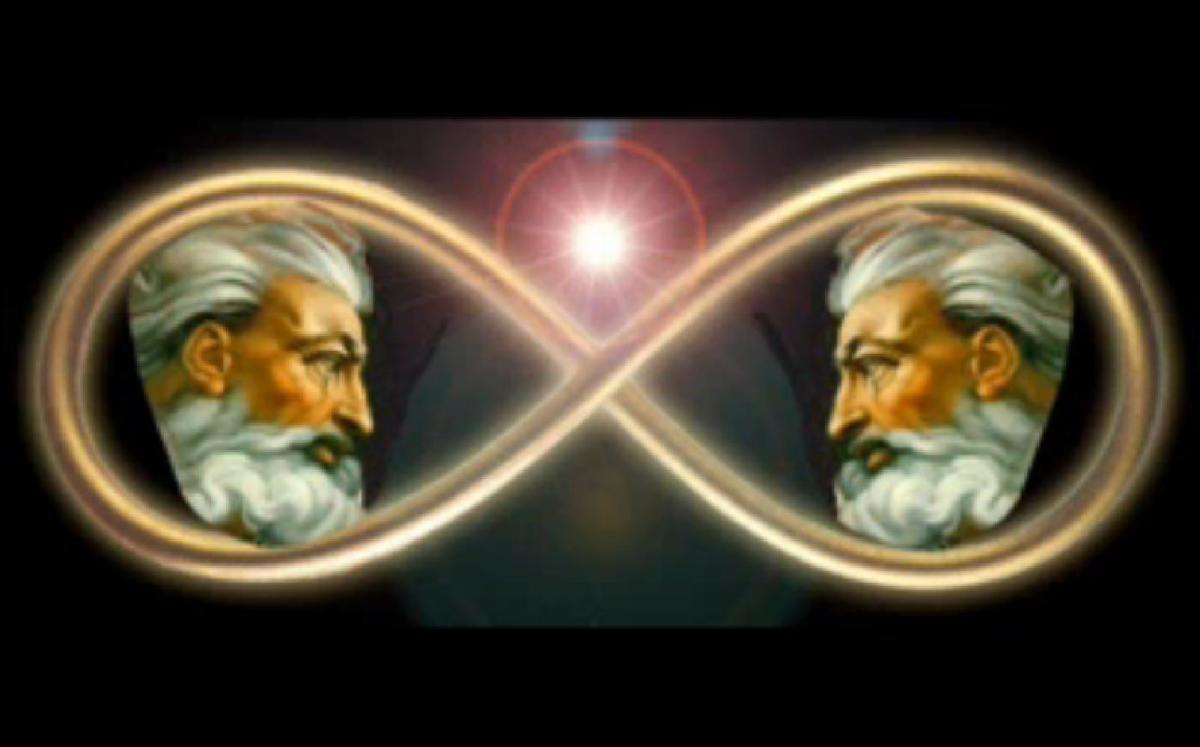How Thought Works

Author's Note:
This article, while it stands alone as an independent piece, can also be read as part of a larger discussion about the value of studying music. If you are interested in exploring this, please go here to the introduction of this series of articles.
Contents

Introduction
In the fundamental notion of symbolization—mystical, practical, or mathematical, it makes no difference—we have the keynote of all humanistic problems.[1]
— Susanne K. Langer, Philosophy In A New Key
As Susanne K. Langer makes clear in her statement above, symbolism lies at the center of human thought. This article digs for the roots of how human thought functions by exploring the nature of symbolism as laid out by Susanne Langer in her book, Philosophy In A New Key, considering it alongside the work of other scholars in the field. Taken all together, the concept of symbolism creates a powerful theoretical perspective for granting insight into the nature of intelligence and human potential.
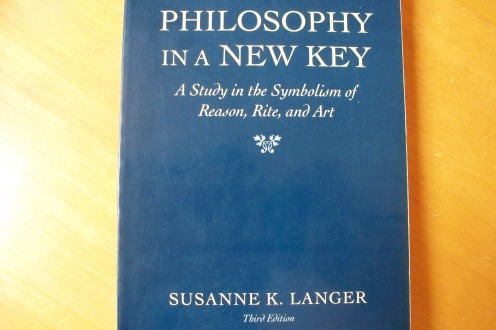
Susanne Langer's Model of Thought
The study of symbolism begins with setting up a basic conceptual model of the human thought process. A simple model that clearly defines the function of thought is presented in the second chapter of Langer’s Philosophy in a New Key where she compares human mental processing to that of animals.[2] In her view, all mental activity begins with the experiencing of the world through the senses. Most higher-order animals possess the senses of touch, taste, hearing, smell, and vision, as we do, and all mental activity is composed of elements drawn from these sensory experiences or some mental extension of them (via imagination or memory). For non-human animals, sensory input is generally processed directly into physical action without conscious consideration. While the information is stored in memory and is mentally processed to a certain extent in the brain stem and limbus of the animal brain, animals are only capable of very limited conscious analysis before they act.[3] Instead, they react instinctively and reflexively to sensory experience.
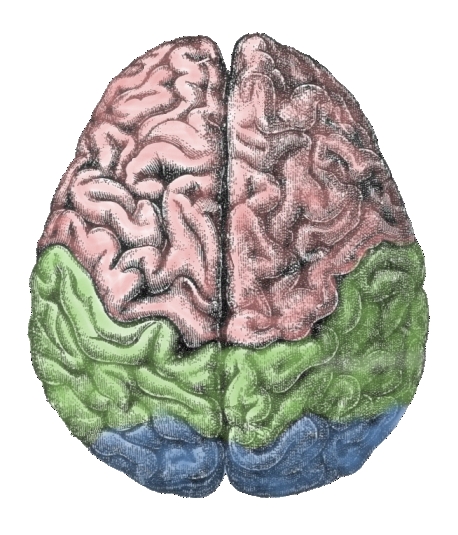
We, as human beings, experience these forms of animalistic mental processing in, among other things, our own reflexive reactions to danger and instincts like hunger or thirst. No conscious thought goes into such reactions; they simply appear. The important distinction for human beings, however, is that our lives are not, on the whole, run on the basis of this kind of processing. This is the case because we are capable of conscious thought and analysis due to the development in our own brains of the neocortex, the neurological part of the brain that allows for the mental representation of sensory experience, or conscious thought. In our own processing, instead of sensory input being processed directly into action, it takes a detour to the neocortex where we can think about it and then act on those determinations instead of reacting instinctively. It is in this intermediate stage of processing by the neocortex where sense experience is transformed into mental representations, or symbols, that can then be combined, manipulated, and reflected upon in the mind.
This being the case, the roots of all thought lead back to some manner of sensory experience. Jacques Hadamard puts it this way:
That part of the world that is there [sensory experience], upon which our interest is intensively occupied, is an organized group of data. From one standpoint these data are simply there--are brute facts--but from another standpoint they are the conditions of the discovery which constitutes knowledge. They are, in fact, the statement of the problem.[4]
Within the context of his own work, Hadamard is referring to how sensory experience of the world presents mathematical puzzles to the mind. Sensory experience, however, presents the initial “statement of the problem” in all areas of human endeavor.
How Symbolism Creates Organized Thought
The mind must somehow find a way to sort and comprehend sensory data to avoid becoming overwhelmed by an unorganized jumble of information. For this purpose, symbolization comes into play. Genuine understanding involves the accurate perception of the relationships that hold between one element in the world (physical, mental, or otherwise) and another. Identifying these elements, articulating their relationships, and facilitating their conception and manipulation is the business of symbolization.
On the reception of sensory experience, the mind immediately begins to symbolize it through a natural “tendency to organize the sensory field into groups and patterns of sense-data.”[5] The mind does not allow sensory experience to come through as a constantly flowing stream of information but immediately perceives it as distinct units.[6] These units come into the mind as cohesive sensory-impressions that serve as the earliest, and most primitive, forms of symbol. As Langer puts it, “The material furnished by the senses is constantly wrought into symbols, which are our elementary ideas.”[7]
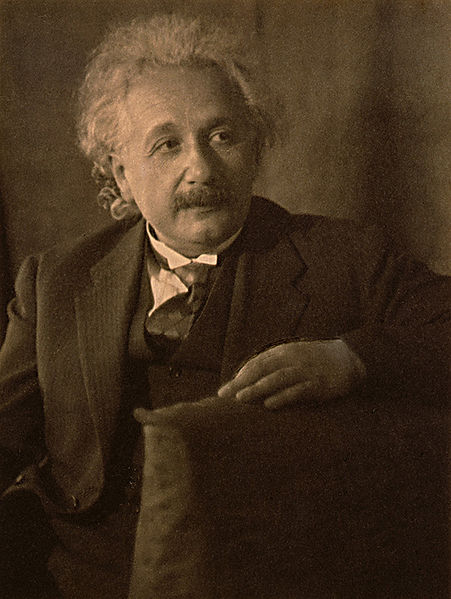
Indeed, even Albert Einstein agreed with this proposition, holding “…that the repeated encounter with images such as ‘memory pictures’ in different contexts, leads to the formation of ‘concepts.’”[8] It is these concepts, or sense-impression symbols, that initiate mental activity. Through the manipulation of these earliest symbols, the mind creates ever more complex combinations of symbols, and thinking, learning, and meaningful activity arise as a result. This is so because, as Langer points out: “. . . if the material of thought is symbolism, then the thinking organism must be forever furnishing symbolic versions of its experiences, in order to let thinking proceed.”[9] It is through engagement in this kind of constant symbolic mental activity that the human mind is able to organize the world of experience and understand the relationships within it. This symbolic mental activity is thought.

The Definition of Symbolism
To understand the dynamics of this symbolic thought process and why it is so central to human thought, however, we must take a look at the function of symbols. The commonly understood definition of a symbol is: “something that refers to something else.” The definition is not that simple, however, because there is a very specific process involved in how a symbol creates the meanings that lead to understanding.
This process involves a relationship between four distinct elements: a symbol, a conception, a subject, and an object. The easiest way to explain this relationship is to take a specific example: imagine a two-year-old boy who has just learned the word “dog.”[10] Within this example, the four elements of the symbolic process are related as follows: the symbol (the word “dog”) calls up in the mind of the subject (the three-year-old boy) a conception (a mental image) of the object (a dog). It is extremely important to note that what the symbol actually calls up in the mind of the child is his conception of a dog, not the dog itself; what symbols refer to are concepts of objects, not the objects themselves.
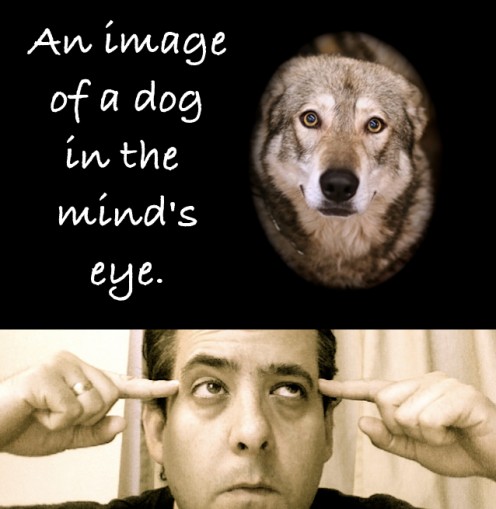
In this way, symbols allow us to talk and think about objects and ideas in the absence of the actual objects themselves by calling on conceptions of the objects.[11] It is these mental conceptions, to which various symbols refer us, that allow us to navigate and organize the sea of thoughts, sensory-impressions, and feelings that constantly fill our consciousness.
This extended definition of what a symbol is and how it works allows us to get a better understanding of what is involved when we suggest that a given symbol has meaning. All uses of the word “meaning” in symbolization involve some kind of relationship between the various elements of the symbolic process: the symbol, subject, conception, and object.[12] A given symbol will have a particular meaning because it shares a relationship with a particular conception or object. For example, the word “apple” has meaning to a particular individual because it calls up in his mind a conception of the real-world object of an apple. To an individual who has never encountered the word “apple” it has no meaning because it shares no relationships with any of his established conceptions.
Denotative Meaning
This is important because a given symbol can have several different kinds of meaning involving various different kinds of relationships. These different kinds of meaning can be broken down into two basic categories: denotative meanings and connotative meanings. We can understand denotative meanings most easily by taking a look at a well-known and familiar symbol system: language.
Denotative Definitions
The Basic Definition of the Word "Dog" according to Dictionary.com:
...a domesticated canid, Canis familiaris, bred in many varieties.

The denotative meaning of a linguistic symbol (a word) refers to its dictionary definition. The dictionary definition of a word is drawn directly from the real-world object to which the word refers and is intended to lead to a clear and accurate conception of that object. For example, the denotative definition of the word “dog” has certain specific parameters drawn directly from actual dogs so that it can easily call on the correct conception of a dog in the mind of the subject.
Understanding the nature of denotative definitions is important because of the power of symbols to have a second kind of meaning, connotative meaning. Returning to our linguistic example, we have established that the denotative meaning of the word “dog” is meant to lead directly back to the real-world object, a dog. The word “dog” also has many connotative meanings, however, as a result of the conception that is aroused when the word “dog” is encountered.
Connotative Meaning via Personal Experience
The symbolic ability for connotation comes from several aspects of the human mind. The first is the fact that the human mind, when it stores information in memory, ties it strongly to the details of the context in which it was gathered.[13] As a result of this, when an individual encounters a symbol, it not only calls up in his mind the denotative meaning of the symbol, but also the memories of the circumstances in which the symbol has been previously experienced. The word “mom” brings to mind not only the picture of one’s mother, but also a host of places, experiences, and memories that surround that image because of one’s life experience. The fact that the symbol “mom” also calls up these other images demonstrates that there is some kind of associative relationship between the two—a relationship that has meaning.
These associative images are certainly not listed in the dictionary beside the word “mom” as being part of its denotative meaning. That the word “mom” does call up other images is without question, however, and so to say that the word “mom” shares some kind of meaningful relationship with these other images is quite correct. Specifically, these images serve as connotative meanings of the word “mom.”
Connotative Meaning via Logical Analogy
The second aspect of the human mind that leads to connotative meanings comes from the fact that the human mind has the ability to perceive subtle and vague associations between various characteristics of objects and experiences. Langer calls this process “logical analogy.” Within her work, she uses this example: “The image of a rose symbolizes feminine beauty so readily that it is actually harder to associate roses with vegetables than with girls.”[14]

While this is, perhaps, a bit overstated it does present a clear example of her point. The real-world objects of a rose and a young woman have very little in common. They look nothing alike and share no biological similarities other than the fact that they are both living things. In reality, the real-world object of a rose and the real-world object of a vegetable have much more in common than exists between a rose and a young girl. The mind perceives a strong relationship between the girl and the rose, however, because of its ability to employ logical analogy. Somehow, the various characteristics of the experience encountered with a rose—physically, emotionally, and mentally—are similar to the characteristics of experience frequently encountered with a young girl. The association that the mind is able to draw between these two seemingly disparate entities is a connotative meaning—a relationship discovered through logical analogy.
The mind is capable of drawing on an almost infinite number of associations for any symbol through the power of logical analogy. Upon encountering a known symbol, the mind will recall an image of the object to which the symbol refers, then immediately surround that image with contextual relationships. All of these images possess a certain character of experience that the mind can compare to the experiences of other symbols, images, and sensory-experiences to discover relationships among them. These relationships, discovered through logical analogy, also serve as connotative meanings of a symbol.

Discursive & Presentational Symbol Systems
Symbols are, therefore, capable of having three different kinds of meaning, one denotative and two connotative. They are separated into two categories because of one important distinction: denotative meanings are intended to lead directly back to the real-world objects to which a symbol refers; connotative meanings, although derived from associations with the real-world object, do not lead directly back to the object but in other directions. The important point, however, is that both are genuine meanings of the symbol because the symbol is capable of calling all of them up in the mind of the subject.
This must be understood because one of the main points that Langer arrives at in her discussion is that not all symbol systems have both denotative and connotative meanings. The words of language have served as our primary examples of symbols thus far. Many things other than words, however, are capable of being classified as symbols so long as they are capable of sharing a meaningful relationship with some other symbol or image. Gardner provides his definition of a symbol in Frames of Mind:
I conceive of a symbol as any entity (material or abstract) that can denote or refer to any other entity. On this definition, words, pictures, diagrams, numbers, and a host of their entities are readily considered symbols. So, indeed, is any element--a line no less than a rock--so long as it is used (and interpreted) as representing some kind of information [my emphasis].[15]
Note that Gardner defines a symbol as “any entity that can denote [have denotative meaning] or refer [have connotative meaning] to any other entity.” Within his short list of possible symbols he mentions words, which we already know to have both kinds of meaning, but also a rock. Imagine a rock on the ground. What does it mean? Such a question makes little sense because, while the word “rock” has denotative meaning, the rock itself, as an object in direct experience, does not; it merely presents itself as a sense-image symbol. As a symbol, however, a rock can have connotative meanings because it does present itself as a symbolic image through sensory experience that can create a flow of connotative meanings.

To demonstrate this, consider a very special kind of rock, a diamond. When one sees a diamond, it does not call up a standardized image of any other specific entity beyond itself. It does, however, call up all sorts of connotative meanings such as weddings, engagement, beauty, strength, and permanence. Langer calls these symbols that have no denotative meanings “presentational symbols” because instead of trying to direct one’s conceptions towards a specific real-world object, a presentational symbol merely presents itself through sensory experience and allows that sense-image to call up its own connotative meanings.[16]
Conclusion
It is within the exchanges that take place among these various discursive and presentational symbol systems that human thought functions; these systems define the underlying structure of human thought. Indeed, this is why schooling in cultures around the world is focused on developing the students’ skills and understandings around very specific symbol systems. The more versatile and articulate one can become in a given symbolic system, the more versatile and articulate one’s thoughts become within that given domain. This is why symbolism lies at the core of human thought.

End Notes & Works Cited
[1] Langer, Susanne K. Philosophy in a New Key. Cambridge, Massachusetts: Harvard University Press. 1942, 25.
[2] Langer, 26–52.
[3] The discussion of the neurology of this process is undertaken by Daniel Goleman here: Goleman, Daniel. Emotional Intelligence. New York, New York: Bantam Books. 1995, 13–29.
[4] Hadamard, Jacques. The Mathematician’s Mind: The Psychology of Invention in the Mathematical Field with a preface by P.N. Johnson-Laird. Princeton, NJ: Princeton University Press. 1945, 63.
[5] Langer, 89.
[6] Goodman, Nelson. Languages of Art: An Approach To A Theory of Symbols. Indianapolis, Indiana: Hackett Publishing Company, Inc. 1976, 205.
[7] Langer, 42.
[8] Gerald Holton, “‘What, precisely, is “thinking”?’: Einstein’s Answer,” in Einstein: A Centenary Volume, ed. A.P. (Cambridge Massachusetts: Harvard University Press, 1979).
[9] Langer, 41.
[10] This example is adapted from a similar one related by Howard Gardner, in The Unschooled Mind, where he discusses how young children learn to categorize objects and events. Gardner, Howard. The Unschooled Mind. New York: BasicBooks. 1991The Unschooled Mind, pp. 64–71.
[11] Langer, 61.
[12] Ibid., 59–60.
[1] Ibid., 145.
[13] Ibid., 145.
[14] Ibid., 145.
[15] Gardner, 301.
[16] Langer discusses this form of symbolization extensively in chapter IV of Philosophy in a New Key, pp. 79–102. Nelson Goodman also discusses this form of symbolism throughout his book, Languages Of Art, but gives it the name of “exemplification symbolization” instead of “presentational symbolization.”






